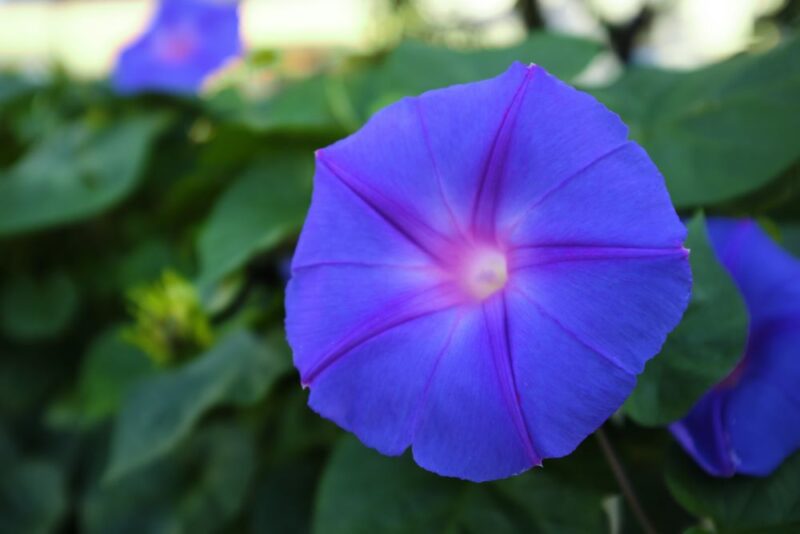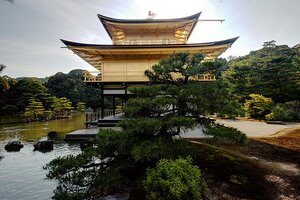The Iriya Asagao Festival is an annual celebration in Tokyo, where visitors can enjoy the rich history and beauty of morning glories. With over 1,000 varieties of these vibrant flowers on display, the festival is a feast for the senses.

From exploring the cultural significance of morning glories in Japan to indulging in delicious Japanese cuisine, this event offers something for everyone. Don’t miss out on this must-attend summer event that combines nature’s beauty with cultural traditions.
Key Takeaways
- Iriya Asagao Festival is an annual event in Tokyo’s Shitamachi district that showcases over 1,000 varieties of morning glory flowers and immerses visitors in the Edo period.
- Morning glories have a significant history in Japan, being brought from China during the Nara Period and becoming popular during the late Edo Period. They are cherished by ordinary Japanese people for generations due to their low maintenance requirements and variety of colors.
- The festival features over 140 stalls set up by morning glory specialists and more than 90 food stalls offering a variety of Japanese cuisine. It highlights key aspects of Japanese culture and provides a fun and engaging experience for all ages.
- The Iriya Asagao Festival is a must-attend event for visitors to Tokyo during the festival dates as it offers the opportunity to experience a traditional summer event, combining nature’s beauty with cultural traditions.
The History and Origins of the Iriya Asagao Festival

The Iriya Asagao Festival, which takes place from July 6 to July 8, has a rich history and origins that can be traced back to the late Edo Period. During this time, morning glories became popular as a decorative plant in daily life. These beautiful flowers captured the hearts of the Japanese people with their vibrant colors and low maintenance requirements. They quickly became a beloved addition to gardens and homes.
The festival itself was revived after World War II as a way to celebrate the cultural significance of morning glories and immerse visitors in the traditions of the Edo period. Today, the festival draws approximately 400,000 visitors each year and showcases over 1,000 varieties of morning glory flowers.
Attending the Iriya Asagao Festival is a must for anyone visiting Tokyo during the festival dates. It provides a fun and engaging experience for all ages.
Exploring the Cultural Significance of Morning Glories in Japan

Morning glories have deep cultural significance in Japan. They were brought from China during the Nara Period and became popular during the late Edo Period. These beautiful flowers hold a special place in the hearts of the Japanese people.
Here are five reasons why morning glories are cherished in Japan:
- They spread as a decorative plant in daily life, adding color and beauty to homes and gardens.
- Their low maintenance requirements make them a popular choice for busy individuals who still want to enjoy the beauty of nature.
- The variety of colors and patterns make growing morning glories a fun and enjoyable pastime.
- Morning glories have been cherished by ordinary Japanese people for generations, connecting them to their cultural heritage.
- The flowers are a symbol of freedom and the fleeting nature of life, reminding people to appreciate the present moment.
Morning glories truly represent the freedom and beauty of Japan, making them an integral part of its culture.
A Spectacular Display: Over 1,000 Varieties of Morning Glory Flowers
Visitors to the Iriya Asagao Festival can enjoy the vibrant display of over 1,000 varieties of morning glory flowers. The festival, held annually in Tokyo’s Shitamachi district from July 6 to July 8, draws approximately 400,000 visitors each year.
This mesmerizing showcase of morning glories takes visitors on a journey back to the Edo period, a time of cultural richness and artistic expression. Revived after World War II, the festival allows people from all walks of life to appreciate the beauty and significance of these beloved flowers.
With its temporary traffic control measures, the festival transforms the streets into a pedestrian playground, creating a sense of freedom and joy. Whether you’re a nature lover, a culture enthusiast, or simply looking for a fun and engaging experience, the Iriya Asagao Festival is a must-attend event that captivates the senses and celebrates Japan’s love for morning glories.
Immersed in Tradition: Experiencing the Edo Period at the Festival
Immersing themselves in the vibrant atmosphere of the Iriya Asagao Festival, attendees can experience the rich traditions and cultural expressions of the Edo period. Here are five reasons why the festival is a must-visit event for anyone looking to delve into Japanese history and traditions:
- Traditional Performances: From lively taiko drumming to elegant tea ceremonies, the festival showcases a variety of traditional performances that transport visitors back in time.
- Historical Exhibitions: Explore historical exhibitions that provide insights into the daily lives of people during the Edo period, including their fashion, art, and architecture.
- Authentic Crafts: Witness skilled artisans creating traditional crafts like pottery, calligraphy, and paper lanterns, offering a glimpse into the craftsmanship of the past.
- Samurai Displays: Get up close and personal with samurai armor and weapons, and learn about the fascinating world of the samurai warriors.
- Cultural Workshops: Participate in interactive workshops where you can try your hand at traditional activities like origami, kimono dressing, and ukiyo-e printmaking.
With its immersive experiences and vibrant celebrations, the Iriya Asagao Festival truly brings the Edo period to life, allowing attendees to connect with Japan’s rich cultural heritage.
Don’t miss out on this unique opportunity to travel back in time and embrace freedom of exploration.
Indulging in Japanese Cuisine and Local Delights at the Festival
Food enthusiasts can indulge in a wide array of delicious Japanese cuisine and local delights at the Iriya Asagao Festival. The festival, held annually in Tokyo’s Shitamachi district from July 6 to July 8, draws approximately 400,000 visitors each year.
With over 140 stalls set up by morning glory specialists and more than 90 food stalls offering a variety of Japanese cuisine, the festival highlights key aspects of Japanese culture while providing a fun and engaging experience for all ages.
From sushi and tempura to yakitori and takoyaki, visitors can savor the flavors of Japan while immersing themselves in the Edo period atmosphere. The festival not only celebrates the vibrant morning glory flowers but also offers a unique opportunity to indulge in the culinary delights of Japan’s rich food culture.
Creating a Pedestrian Playground: Temporary Traffic Control Measures
Temporary traffic control measures during the Iriya Asagao Festival create a lively pedestrian playground for attendees to enjoy. The festival organizers understand the importance of providing a safe and enjoyable environment for visitors to enjoy the vibrant atmosphere of the event.
These measures include:
- Closure of certain streets to vehicle traffic, allowing pedestrians to freely explore the festival grounds without any worries about cars or congestion.
- Installation of temporary barriers and signage to guide pedestrians and ensure a smooth flow of foot traffic throughout the festival area.
- Implementation of designated pedestrian zones, where attendees can stroll leisurely and take in the sights and sounds of the festival at their own pace.
- Provision of ample seating areas and rest spots, allowing visitors to take a break, relax, and fully enjoy the festival experience.
- Collaboration with local law enforcement to ensure the safety of attendees and enforce traffic regulations, providing a sense of security and freedom for all.
With these temporary traffic control measures in place, attendees can fully embrace the lively atmosphere of the Iriya Asagao Festival, knowing that their safety and freedom to explore are being prioritized.
Tokyo’s Must-Attend Summer Event: Iriya Asagao Festival
Visitors flock to Tokyo’s Shitamachi district every July to experience the vibrant atmosphere and cultural activities of the annual Iriya Asagao Festival. This must-attend event celebrates Japan’s love for morning glories, showcasing over 1,000 varieties of these beautiful flowers.
From July 6 to July 8, approximately 400,000 people come together to enjoy the Edo period and enjoy the rich history and significance of morning glories in Japan. The festival offers much more than just flower displays.
With over 140 stalls set up by morning glory specialists and more than 90 food stalls offering a variety of Japanese cuisine, visitors can indulge in the best of Japanese culture. It’s a fun and engaging experience for all ages, creating a pedestrian playground that captures the freedom and joy of summer.
Captivating Beauty: Stunning Images of Morning Glory Flowers
The captivating beauty of morning glory flowers is showcased in stunning images shared on Instagram by photographers around the world.
These vibrant and delicate blooms have captured the hearts of many, and it’s no wonder why. With their vibrant colors and intricate patterns, morning glories are a sight to behold. From deep purples and blues to soft pinks and whites, each flower is unique and mesmerizing in its own way.
These images not only celebrate the beauty of nature but also inspire us to pause and appreciate the simple joys that exist all around us. They remind us to seek freedom and find solace in the beauty of the world.
Frequently Asked Questions
What Are Some of the Key Cultural Activities That Visitors Can Participate in at the Iriya Asagao Festival?
Visitors to the Iriya Asagao Festival can participate in various cultural activities, including traditional Japanese tea ceremonies, calligraphy workshops, and Edo period costume displays. These engaging activities provide a deeper understanding of Japan’s rich cultural heritage.
Are There Any Specific Types or Colors of Morning Glory Flowers That Are Particularly Popular or Significant in Japan?
There are several types and colors of morning glory flowers that are particularly popular and significant in Japan. They vary in shades of blue, purple, pink, and white, and each holds its own cultural significance.
How Did the Iriya Asagao Festival Evolve and Change After World War Ii?
After World War II, the Iriya Asagao Festival experienced a revival. It evolved to become an annual event in Tokyo’s Shitamachi district, drawing hundreds of thousands of visitors. The festival showcases over 1,000 varieties of morning glory flowers and immerses visitors in the Edo period.
Can You Provide Any Information About the Morning Glory Specialists Who Set up Stalls at the Festival? What Makes Them Experts in This Particular Flower?
The morning glory specialists at the festival are experts in this particular flower. They have extensive knowledge of its cultivation, care, and various varieties. Their stalls showcase the beauty and diversity of morning glories, adding to the immersive experience of the event.
What Are Some of the Unique Foods or Dishes That Visitors Can Expect to Find at the Food Stalls During the Festival?
Visitors to the Iriya Asagao Festival can expect to find a variety of unique Japanese dishes at the food stalls. From savory street food to delicious desserts, there’s something for everyone to enjoy and savor during the festival.
The Sum Up
To sum it up, the Iriya Asagao Festival is a captivating celebration of Japan’s love for morning glories.
With its rich history and cultural significance, the festival offers visitors a unique opportunity to enjoy the beauty and traditions of the Edo period.
The stunning display of over 1,000 varieties of morning glory flowers is a sight to behold, and the festival’s wide array of food stalls ensures that visitors can indulge in delicious Japanese cuisine.
From the temporary traffic control measures that create a pedestrian playground to the must-attend status of the event, the Iriya Asagao Festival truly embodies the spirit of summer in Tokyo.
Don’t miss out on this unforgettable experience!



